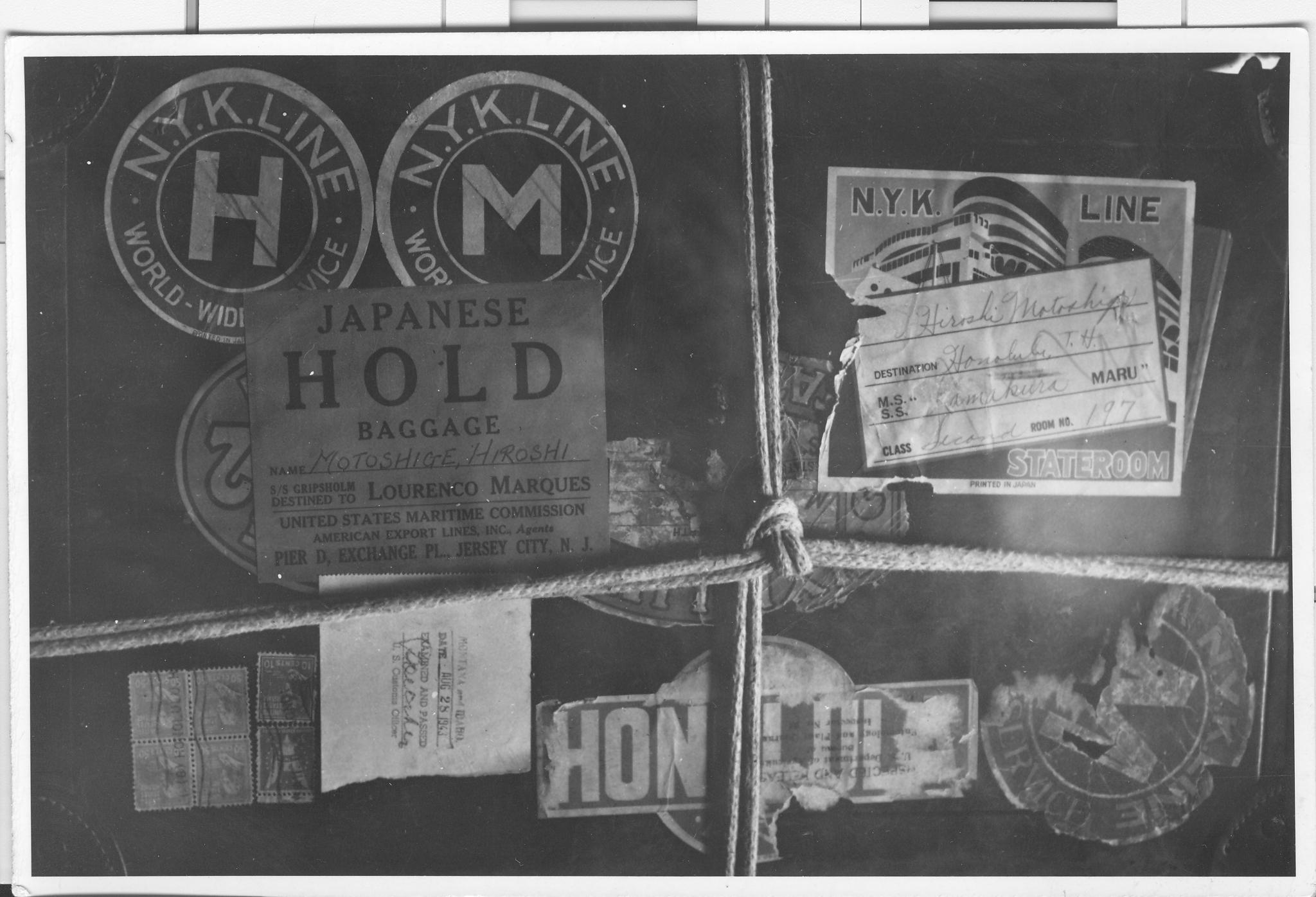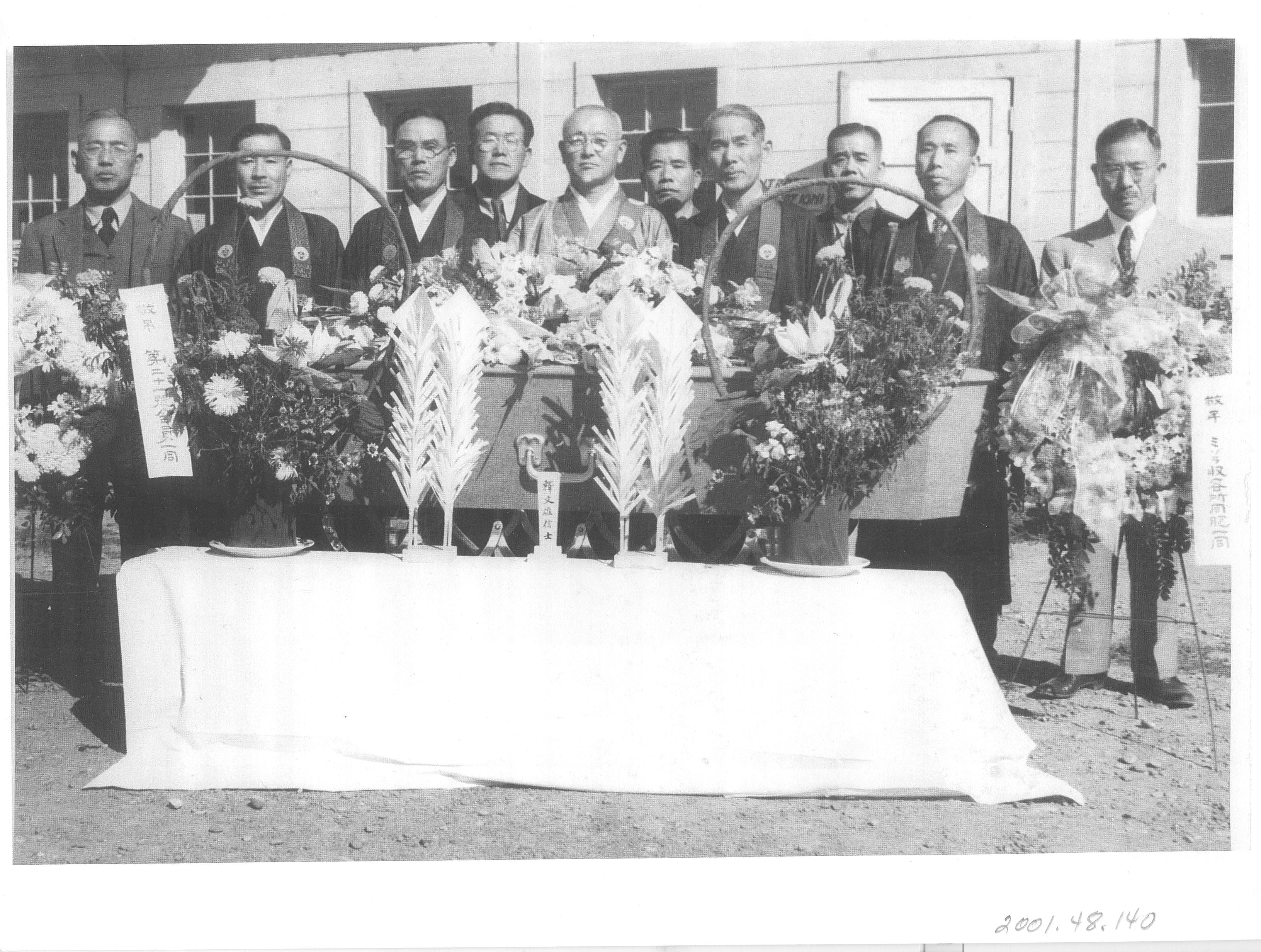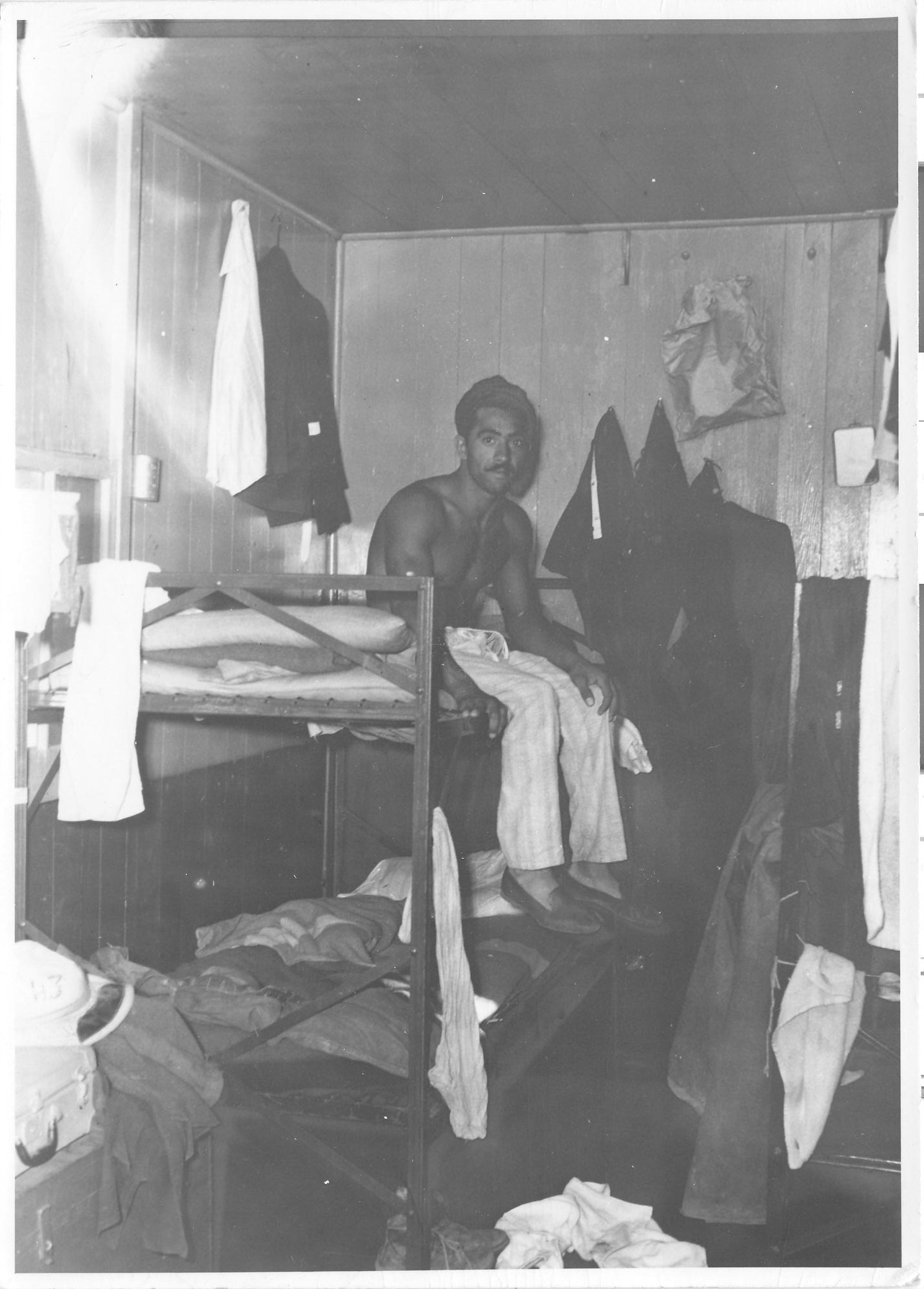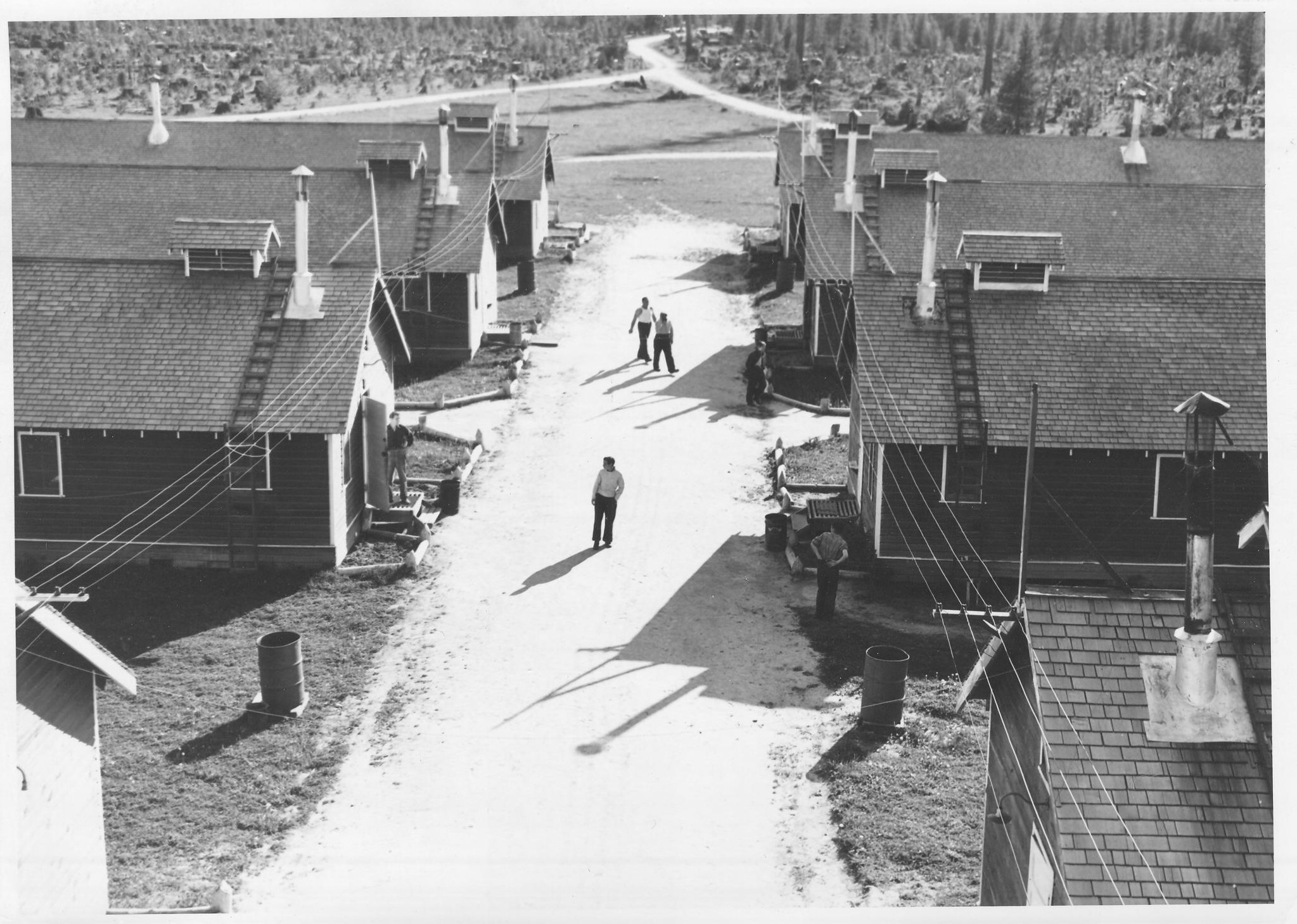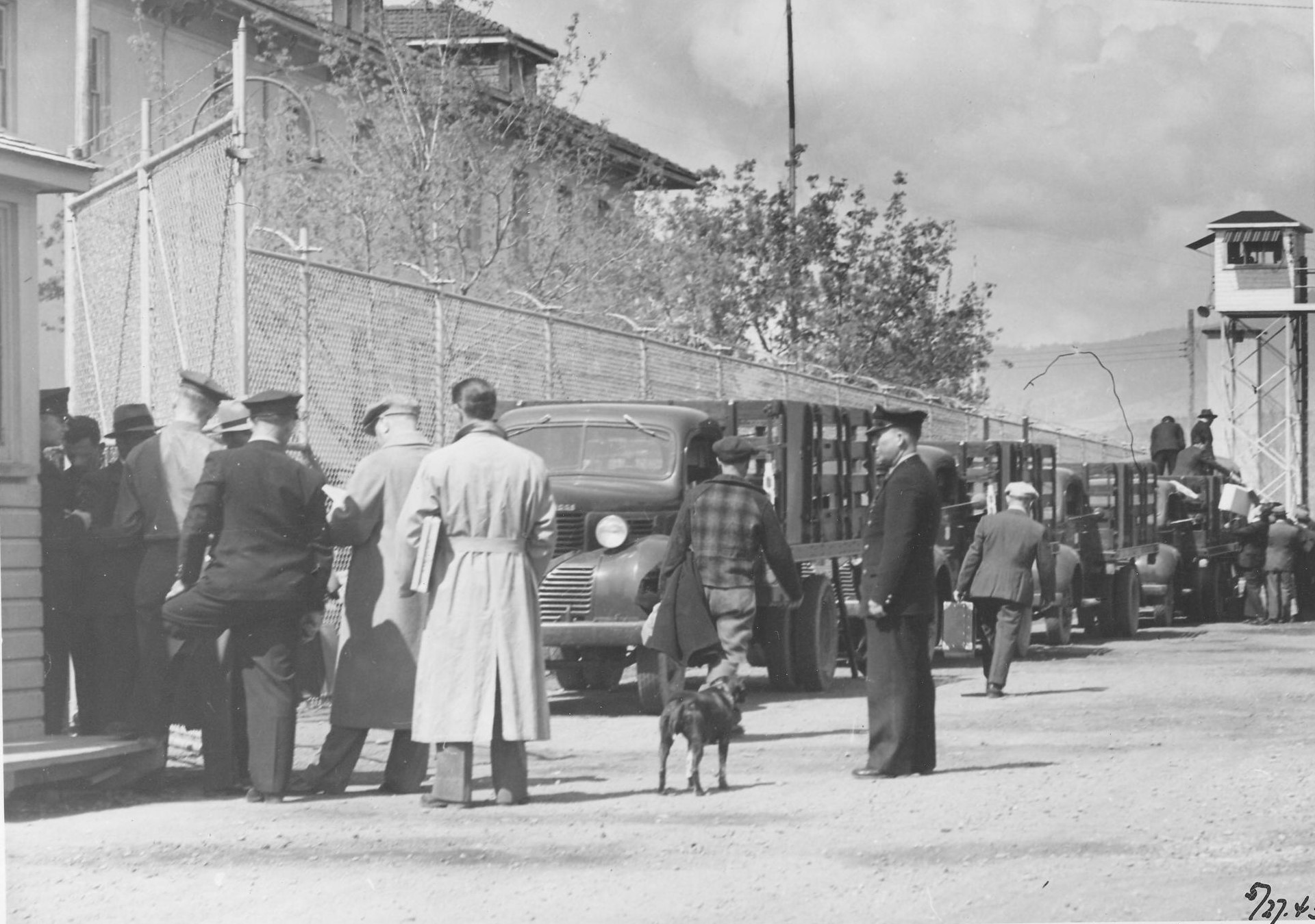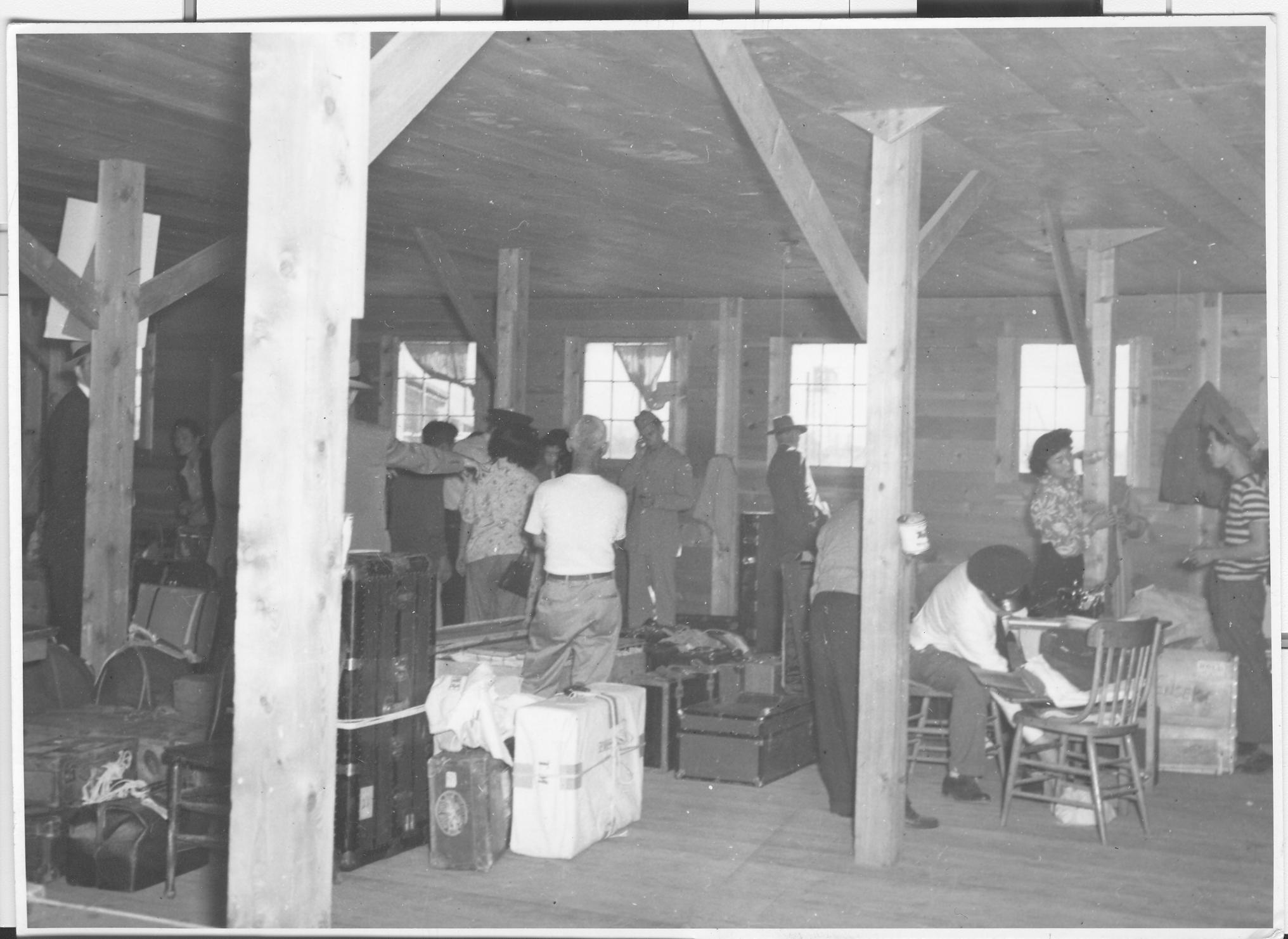During World War II, Fort Missoula was turned over to the Department of Justice, Immigration and Naturalization Service, for use as an Alien Detention Center. Between 1941 and 1944, the ADC held 1,200 non-military Italian men, 1,000 Japanese resident aliens, 23 German resident aliens, and 123 Japanese Latin and South Americans.
Fort Missoula’s ADC was established to hold foreign nationals and resident aliens, to distinguish it from the 10 better known War Relocation Act camps that held 120,000 Japanese Americans.
WWII Alien Detention Center Barracks Exhibit
Click the below image for a virtual walk through the exhibit. For full screen click the ![]() .
.
Brief History:
The Italian men were merchant seamen, World’s Fair employees, and the crew of the Italian luxury liner, the Conte Biancamano, seized in the Panama Canal. Many of the Italians, who referred to the Fort as “Bella Vista,” spent the war as paid laborers replacing American men who were off fighting overseas. They worked in forestry, farming, in the sugar beet industry, and constructing Highway 12.
Following the bombing of Pearl Harbor on December 7, 1941, the FBI arrested more than a 1,000 of the most prominent Japanese leaders on the west coast as potential security risks. Ultimately, over 1,000 Japanese men, all resident aliens barred by law from American citizenship, were held at Fort Missoula subjected to loyalty hearings. None were ever charged with any act of disloyalty but all remained in custody at Fort Missoula or other camps for the duration of the war. The courtroom, located in Post Headquarters building T-1, used during these loyalty hearings has been restored by HMFM.
A handful of German resident aliens were held for short periods of time at Fort Missoula, while the majority of Germans were held at Fort Lincoln in Bismarck, North Dakota. The 123 men of Japanese ancestry from Latin and South America, mostly Peru, were a very small part of several thousand held primarily at the Santa Fe camp or at Crystal City, Texas.
Fort Missoula changed to accommodate this new population in a number of ways. They constructed a 10-foot fence topped with barbed wire and surrounded the property with guard towers at each corner. These towers were 40-foot tall and linked by telephone to the main office and ground-lever guardhouses located at each of Fort entrances. Guards were equipped with radios, billy clubs, gas masks and 37mm tear gas guns. The camp was nearly self-contained; the detained men did their own cooking, cleaning, laundry, gardening, and general maintenance. They were given free time for English lessons, arts and crafts, playing music, putting on theatre productions and playing sports such as golf, bocce, tennis, and soccer.
Fort Missoula is currently the largest intact WWII internment site with most major buildings of the era still in use, including the Post Headquarters with its courtroom, the hospital, commissary, officer and staff housing, barracks and other support structures. The Historical Museum has an exhibit on internment housed in an original barrack and is working on restoring the rest of the Post Headquarters building.
See our exhibit focusing on the experiences of the Japanese Issei Men at Fort Missoula. For full screen click the ![]() .
.
Additional Information
- Fort Missoula Alien Detention Center Photograph Collection.
- Book Talk – Photographic Memories: A Story of Shinjitsu
- WWII Alien Detention Center Presentations & Tours
- My 2 1/2 Years Behind Barbed Wire in the United States: Lecture by Japanese American WWII Internee
- Museum Exhibit – Looking Like the Enemy: the Internment of the Issei at Fort Missoula
- Partial list of names of Japanese men held at Fort Missoula’s Department of Justice Alien Detention Camp 1941-1944
- Densho: The Japanese American Legacy Project
- Italian Sons and Daughters of America
- German American Internee Coalition
- 2021 National Park Service JACS Grant Announcement
Books and Videos:
- Farewell to Manzanar – Jeanne Wakatsuki Houston & James Houston
- No-No Boys – John Okada
- Only What We Could Carry – Lawson Fusao Inada
- Hotel on the Corner of Bitter and Sweet – Jamie Ford
- Photographic Memories: A Story of Shinjitsu – Risa Shimoda and Bob Fleshner
- Bend with the Wind – Naomi Shibata
- Never Give Up! Minoru Yasui and the Fight for Justice – Producer Holly Yasui
- For the Sake of the Children – Producer Marlene Shigekawa
- An Alien Place Documentary – The Historical Museum at Fort Missoula
- An Alien Place Book – Carol Van Valkenburg
- Last Year of the War – Susan Meissner
- Italian American Internment: The Detainment of Italians and Italian Americans During WWII (documentary)
- Children of Internment – German Families in US Camps (documentary)
- The Unknown Internment: An Oral History of the Relocation of Italian Americans During WWII – Stephen R. Fox
- An Internment Odyssey: Haisho Tenten – Kumaji Furuya (book)

